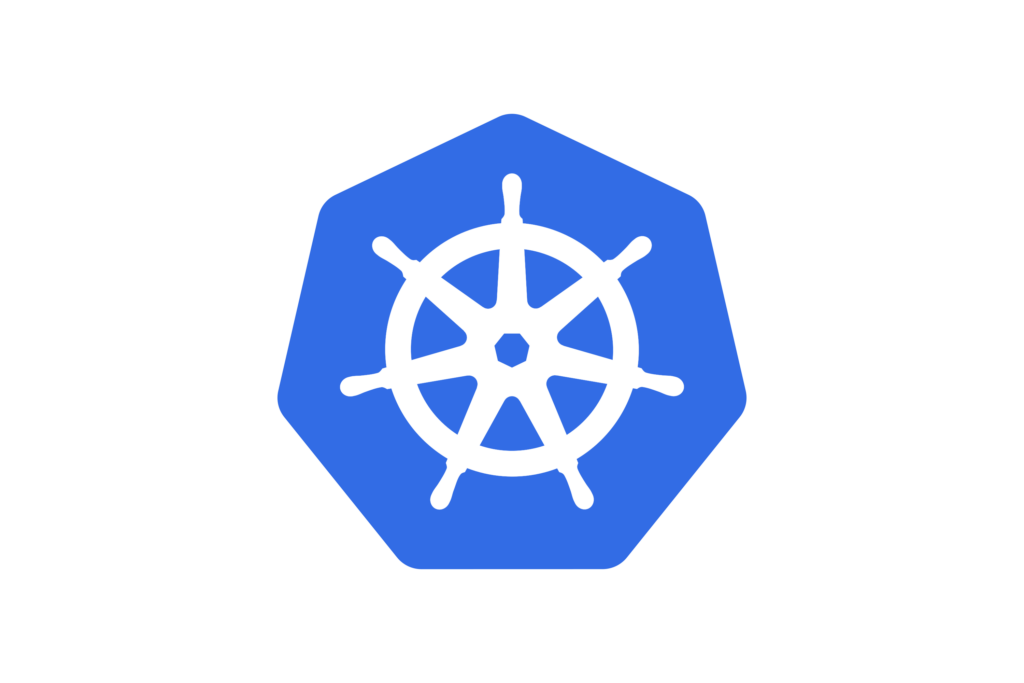Top Kubernetes Cluster Management Tools

It is important t to learn more about top Kubernetes tools. Kubernetes is an open-source platform for container orchestration that streamlines the deployment, management, and scaling of containerized applications across clusters of nodes. Its core features and benefits include:
Kubespray
Kubespray is a powerful open-source tool for deploying and managing Kubernetes clusters, utilizing Ansible for automation. Its flexibility and user-friendliness make it suitable for diverse environments, including public clouds, on-premises systems, and bare-metal servers.
Key Features
- Automation with Ansible: Kubespray uses Ansible playbooks to automate the provisioning and setup of Kubernetes clusters across multiple nodes. This ensures consistent and repeatable deployments, minimizing the risk of human error.
- Multi-Environment Support: It supports deployment on various platforms such as AWS, Google Cloud, Azure, OpenStack, and bare metal. This adaptability makes it a good choice for hybrid cloud environments and edge computing.
- Customizability: Users can tailor many aspects of the deployment, including network plugins, Linux distributions, and container runtimes. This flexibility allows teams to customize their Kubernetes environments to meet specific requirements.
- Production-Ready Deployments: Kubespray is built to create production-ready clusters, ensuring that all necessary components are correctly configured for high availability and optimal performance.
Rancher
Rancher is a comprehensive software stack for managing Kubernetes clusters, particularly useful for teams implementing container technologies. It offers an intuitive interface and a range of tools that simplify the management of multiple Kubernetes clusters.
Key Features
- Multi-Cluster Management: Rancher enables users to oversee multiple Kubernetes clusters from a single interface, whether they are on-premises or in the cloud.
- User Interface: Rancher provides a web-based GUI that makes managing Kubernetes resources easier, especially for users who may not be familiar with command-line tools.
- Integrated Tools: The platform includes built-in tools for monitoring, logging, and security, offering a holistic solution for managing Kubernetes environments.
Access Control and Security: Rancher features strong access control mechanisms, allowing administrators to set user roles and permissions across clusters.
- Support for Different Kubernetes Distributions: Rancher accommodates various Kubernetes distributions, enabling organizations to select the best option for their needs while maintaining a consistent management experience.
Monitoring and Observability

Prometheus

Prometheus is an open-source monitoring system and time series database designed for reliability and scalability in cloud-native environments, especially Kubernetes. Developed by SoundCloud in 2012, it is now a prominent project under the Cloud Native Computing Foundation (CNCF).
Key Features
- Time Series Data Model: Prometheus stores metrics as time series data, recording data points with timestamps. Each time series is distinguished by a metric name and a set of key-value pairs (labels), allowing for detailed and flexible data representation.
- Data Collection: Using a pull model, Prometheus collects metrics from configured targets at specified intervals by querying these targets through HTTP endpoints. This method simplifies data collection from various services and applications.
- Powerful Query Language (PromQL): Prometheus includes its own query language, PromQL, enabling users to select and aggregate time series data in real-time. This feature is crucial for creating alerts and deriving insights from the collected metrics.
- Alerting: Prometheus supports alerting based on user-defined conditions. The Alertmanager component manages notifications and silencing, allowing teams to receive alerts through channels like email, Slack, or PagerDuty when certain thresholds are reached.
- Integration with Visualization Tools: While Prometheus provides a built-in expression browser, it also integrates with external visualization tools such as Grafana, allowing users to create detailed dashboards and visual representations of their metrics.
Grafana

Grafana is an open-source visualization tool that integrates smoothly with Prometheus and other data sources. It is mainly used for creating interactive and visually engaging dashboards to monitor metrics.
Key Features
- Rich Visualizations: Grafana offers a diverse range of visualization options, such as graphs, charts, heatmaps, and tables. This variety allows users to display their data in the most effective and informative manner.
- Dashboard Sharing and Collaboration: Users can design dashboards that can be shared with teams, promoting collaboration and communication about system performance and health.
- Data Source Integration: Besides Prometheus, Grafana supports a range of data sources including InfluxDB, Elasticsearch, and more, making it a versatile tool for monitoring various systems.
- Alerting Capabilities: Grafana features alerting functionality, enabling users to set up notifications based on specific conditions in their visualized data, thereby improving the monitoring process.
Kiali
Kiali is an observability tool designed specifically for managing and visualizing service meshes, particularly those using Istio. It provides insights into the interactions between microservices, helping teams understand and optimize their service mesh configurations.
Key Features
- Service Mesh Visualization: Kiali offers a graphical view of the service mesh topology, allowing users to see how services interact with each other. This visualization helps identify dependencies and potential bottlenecks in service communication.
- Metrics and Health Monitoring: Integrated with Prometheus, Kiali displays metrics related to service performance, such as request rates, error rates, and latencies. This information is crucial for evaluating the health of services within the mesh.
- Configuration Validation: Kiali validates Istio configurations to ensure that the service mesh is correctly set up and follows best practices. This feature helps prevent misconfigurations that could lead to performance issues or security vulnerabilities.
- Tracing Integration: Kiali supports distributed tracing, allowing users to trace requests as they move through the service mesh. This capability is essential for diagnosing performance issues and understanding complex microservices architectures.
CI/CD and Deployment

Helm
Helm is a robust package manager for Kubernetes that streamlines the deployment and management of applications. It enables developers to define, install, and upgrade complex Kubernetes applications with ease.
Key Features
- Charts: Helm uses a packaging format known as “charts,” which are collections of files that describe a set of related Kubernetes resources. Charts can cover everything from deployments and services to config maps and secrets, simplifying the management of complex applications.
- Versioning: Helm supports chart versioning, making it easy to manage different versions of the same application. This feature is particularly useful for rolling back to previous versions if needed.
- Templating: Helm charts use a templating engine that allows for dynamic configuration customization. This enables the parameterization of deployments, making it straightforward to deploy the same application in various environments (e.g., development, staging, production) with different settings.
- Repository Management: Helm facilitates the creation and management of chart repositories, allowing users to share applications within teams or across organizations. Public repositories, such as Artifact Hub, offer a broad selection of pre-built charts for popular applications.
- Release Management: Helm oversees the lifecycle of applications deployed to Kubernetes, providing users with simple commands to install, upgrade, or uninstall applications.
Argo CD
Argo CD is a declarative, GitOps continuous delivery tool designed for Kubernetes. It allows teams to automate the deployment of applications in a Kubernetes environment by using Git as the source of truth.
Key Features
- GitOps Approach: Argo CD implements the GitOps methodology, where the desired state of applications is maintained in Git repositories. Changes to application configurations or deployment processes are made through Git commits, which supports version control and collaboration.
- Declarative Configuration: Users define the desired state of their applications in YAML files, which Argo CD uses to ensure that the actual state in the Kubernetes cluster matches the desired state. This approach simplifies management and minimizes the risk of configuration drift.
- Automated Syncing: Argo CD constantly monitors the Git repository for updates and automatically synchronizes the Kubernetes cluster to match the desired state defined in Git. Users can choose between automatic or manual synchronization based on their requirements.
- Multi-Cluster Support: Argo CD manages multiple Kubernetes clusters from a single interface, making it a suitable choice for organizations with complex deployments across various environments.
- User Interface and CLI: Argo CD offers both a web-based UI and a command-line interface (CLI) for managing applications, viewing deployment statuses, and troubleshooting issues.
Tekton
Tekton is an open-source framework designed for building Kubernetes-native CI/CD systems. It provides a set of Kubernetes resources that enable developers to define and execute CI/CD pipelines directly within Kubernetes.
Key Features
- Kubernetes-Native Pipelines: Tekton pipelines are created using Kubernetes custom resources, allowing teams to harness the full capabilities of Kubernetes for building, testing, and deploying applications. This native integration ensures that CI/CD processes can scale in tandem with the applications they support.
- Reusable Components: Tekton encourages the use of reusable components known as “Tasks” and “Pipelines.” Tasks represent individual steps in a CI/CD process, while Pipelines orchestrate the execution of multiple tasks. This modular design enables teams to construct complex workflows from simple, reusable building blocks.
- Flexibility and Extensibility: Tekton is highly adaptable, allowing teams to integrate it with existing tools and services. Custom tasks can be created to meet specific needs, making Tekton suitable for a wide range of CI/CD scenarios.
- Event-Driven Architecture: Tekton supports event-driven workflows, enabling pipelines to be triggered by events such as code commits or pull requests. This feature enhances automation and responsiveness within the CI/CD process.
- Integration with Other Tools: Tekton easily integrates with other tools in the Kubernetes ecosystem, such as Git repositories, container registries, and monitoring solutions, facilitating the creation of comprehensive CI/CD pipelines.
Kube-bench
Kube-bench is an open-source tool developed by Aqua Security that automates the process of evaluating Kubernetes clusters against the Center for Internet Security (CIS) Kubernetes Benchmark. This benchmark offers guidelines and best practices for securing Kubernetes deployments, addressing various aspects such as control plane components, worker nodes, and network policies.
Key Features
- CIS Compliance Checks: Kube-bench performs a series of predefined checks to determine if a Kubernetes cluster meets CIS benchmark standards. These checks help identify potential security vulnerabilities and ensure adherence to industry best practices.
- Cluster Hardening: By automating the assessment, Kube-bench assists in strengthening the security posture of Kubernetes clusters. It reviews settings related to RBAC (Role-Based Access Control), pod security standards, and secret management to ensure best practices are followed.
- Flexible Deployment: Kube-bench can be run in two primary ways: directly from the command line or as a Kubernetes job. This flexibility allows users to perform security checks in various environments, including managed Kubernetes services where direct control plane access might be limited.
- Detailed Reporting: After completing the checks, Kube-bench generates a report that shows which checks passed, failed, or issued warnings. This report provides actionable insights and remediation steps for any failed checks, helping teams focus on necessary security improvements.
- Continuous Monitoring: Kube-bench can be integrated into CI/CD pipelines, enabling ongoing security assessments as part of the deployment process. This integration ensures that security checks are consistently applied and that any new vulnerabilities are addressed promptly.
Security Tools

Falco
Falco, an open-source security tool developed by Sysdig, not only serves as a behavioral activity monitor but also excels in detecting anomalous behavior in applications running within Kubernetes environments. Moreover, it specializes in runtime security, providing real-time monitoring and alerting capabilities.
Key Features
- Behavioral Monitoring: Falco tracks system calls made by applications and compares them against a set of predefined rules. This process helps detect unexpected behaviors, such as unauthorized access attempts or unusual network activity, which could signal a security breach.
- Customizable Rules: Users can create custom rules tailored to their specific applications and security needs. Consequently, this adaptability allows organizations to fine-tune Falco’s monitoring to fit their unique environments and threat models.
- Integration with Kubernetes: Furthermore, Falco operates seamlessly within Kubernetes clusters. Specifically, by deploying it as a DaemonSet, you ensure comprehensive monitoring of all nodes in the cluster for potential security threats.
- Alerting and Notifications: Moreover, upon detecting anomalous behavior, Falco generates alerts that can be sent to various notification channels, including Slack or email. This prompt feedback enables teams to respond swiftly to potential security incidents.
- Integration with Other Tools: Furthermore, you can integrate Falco with additional security tools and platforms. As a result, this enhances its functionality and contributes to a more robust security posture.
Development Tools
K9s
K9s is a terminal-based user interface (UI) for managing Kubernetes clusters, designed to streamline navigation and resource management. It offers a powerful command-line interface that enables users to interact with their Kubernetes resources more effectively.
Key Features
- Intuitive Navigation: K9s lets users browse and manage Kubernetes resources using keyboard shortcuts, which simplifies operations and reduces the need to type long kubectl commands.
- Resource Management: Users can view and manage various Kubernetes resources, such as pods, deployments, services, and namespaces, all from a single interface. This centralized management enhances operational efficiency and productivity.
- Real-Time Updates: K9s provides real-time updates on resource status, thereby enabling users to monitor their clusters and address changes or issues as they occur.
- Customizable Views: Additionally, users can tailor the views and layouts within K9s to their preferences. Consequently, this improves the user experience and makes it easier to focus on specific resources.

Skaffold
Skaffold is a command-line tool that simplifies continuous development for Kubernetes applications. It automates the build, deployment, and testing processes, streamlining the development workflow.
Key Features
- Automated Workflows: Skaffold handles the entire development workflow, including building container images, deploying them to Kubernetes, and running tests. As a result, this automation reduces manual effort and speeds up the development cycle.
- Hot Reloading: Additionally, Skaffold allows developers to make code changes and see immediate results without manually rebuilding and redeploying applications. This hot reloading feature significantly boosts productivity and accelerates the feedback loop.
- Multi-Environment Support: Furthermore, Skaffold supports various Kubernetes environments, thereby enabling developers to easily switch between local development, staging, and production setups.
. - Integration with CI/CD: You integrate Skaffold into CI/CD pipelines to automate deployment processes and ensure consistent building and testing of applications before deployment.
Cost Management
Kubecost
Kubecost is a tool designed to monitor and manage Kubernetes costs. This will offer insights into resource utilization and spending. It assists organizations in optimizing cloud expenditures and improving budget management.
Key Features
- Cost Monitoring: Kubecost tracks resource usage across Kubernetes clusters. As a result, it delivers detailed insights into costs associated with different workloads, namespaces, and services.
- Budget Alerts: Users can establish budget thresholds and receive alerts when spending approaches or exceeds set limits. This feature helps teams stay within their budget and prevent unexpected expenses.
- Resource Optimization Recommendations: Kubecost analyzes resource utilization patterns and suggests optimizations for resource allocation. Specifically, this includes rightsizing instances or adjusting resource limits to enhance efficiency.
- Integration with Cloud Providers: Additionally, Kubecost integrates with various cloud providers, thereby offering a comprehensive view of spending across different environments.
.
CloudZero
CloudZero is a Kubernetes cost intelligence platform that helps teams understand and optimize their cloud spending. It provides detailed insights into costs and usage patterns, enabling better financial management in cloud environments.
Key Features
- Cost Allocation: CloudZero enables teams to allocate costs to specific teams, projects, or business units. As a result, it provides visibility into spending across the organization.
- Usage Insights: The platform delivers detailed insights into usage. Consequently, this helps teams detect trends and anomalies in cloud spending.
- Recommendations for Cost Savings: CloudZero examines spending patterns and provides recommendations for cost savings, such as identifying underutilized resources or suggesting more cost-effective service options.
- Integration with CI/CD: CloudZero integrates with CI/CD workflows, allowing teams to monitor costs associated with deployments and make informed decisions about resource allocation.
Logging and Tracing

ELK Stack (Elasticsearch, Logstash, Kibana)
The ELK Stack is a widely-used suite of tools for logging and visualizing log data from Kubernetes applications. It comprises three components: Elasticsearch for storing and searching log data, Logstash for data processing and ingestion, and Kibana for visualization.
Key Features
- Centralized Logging: The ELK Stack aggregates log data from multiple sources, thus facilitating easier search, analysis, and visualization of logs from Kubernetes applications.
- Powerful Search Capabilities: Furthermore, Elasticsearch offers robust search functionality, enabling users to quickly query log data and extract valuable insights.
- Customizable Dashboards: In addition, Kibana allows users to create tailored dashboards for visualizing log data, assisting teams in effectively monitoring application performance and troubleshooting issues.
- Real-Time Analysis: Moreover, the ELK Stack supports real-time log analysis, enabling teams to swiftly react to incidents and gain insights into application behavior.
Jaeger
Jaeger is a distributed tracing system designed to monitor and troubleshoot transactions in complex microservices architectures. It is particularly effective for those operating within Kubernetes.
Key Features
- Distributed Context Propagation: Jaeger facilitates the seamless propagation of context across microservices. Consequently, this enables teams to effectively trace requests as they move through the system.
- Performance Monitoring: Furthermore, by visualizing request flows, Jaeger helps identify performance bottlenecks and optimize microservices for improved efficiency.
- Root Cause Analysis: Jaeger offers valuable insights into service interactions, thus making it easier to diagnose issues. Additionally, it helps teams understand the root causes of performance problems.
- Integration with Other Tools: Jaeger integrates with monitoring and logging tools, such as Prometheus and the ELK Stack, providing a comprehensive view of application performance.
Additional Tools

Kubectl
kubectl is the official command-line interface (CLI) for managing Kubernetes clusters. It is an essential tool for performing a wide range of operations and maintaining Kubernetes environments.
Key Features
- Resource Management: kubectl allows users to create, update, delete, and view Kubernetes resources, such as pods, services, and deployments. It also plays a crucial role in deploying and managing applications within a Kubernetes cluster.
- Cluster Configuration: Additionally, the tool can configure cluster-level settings. This includes authentication and authorization setup, managing node labels, and configuring network policies.
- Debugging and Troubleshooting:
offers various commands for debugging and troubleshooting Kubernetes clusters. This includes commands for viewing logs, executing commands inside containers, and port-forwarding. Consequently, it provides comprehensive tools for effective cluster management.kubectl - Formatting and Filtering: Additionally, the tool supports output formatting in various styles (JSON, YAML, table) and allows for filtering results based on specific criteria. This capability makes it easier to retrieve relevant information efficiently.
- Scripting and Automation: Additionally, we can integrate kubectl into scripts and automation tools. Consequently, this enables the creation of custom workflows and system integrations..
Kind (Kubernetes in Docker)
Kind is a tool that allows users to run local Kubernetes clusters using Docker container “nodes.” It is especially useful for testing and development, providing an efficient way to create and manage Kubernetes clusters on local machines.
Key Features
- Local Kubernetes Clusters: Kind enables the creation of Kubernetes clusters using Docker containers as nodes. Consequently, this allows for easy setup and teardown without relying on virtual machines or cloud resources.
- Supports Multiple Nodes: Furthermore, Kind supports the creation of clusters with multiple nodes. As a result, this feature makes it possible to test more complex scenarios and configurations..
- Customizable Configurations: In addition, users can customize their Kubernetes cluster setup by providing a configuration file. Consequently, this flexibility allows for specifying the number of nodes, node images, and other settings..
- Integration with kubectl: Moreover, Kind integrates smoothly with
. Thus, users can interact with the local Kubernetes cluster using familiarkubectl
commands.kubectl - CI/CD Integration: Additionally, you can utilize “Kind” in continuous integration and continuous deployment (CI/CD) pipelines to test Kubernetes applications and configurations before deploying them to production.
[Want to learn more about top kubernetes tools? Click here to reach us.]
Conclusion
In the dynamic landscape of Kubernetes, leveraging the right tools is crucial for optimizing operations and ensuring efficient management of your clusters. Tools like Kube-bench and Falco enhance security, while Grafana and Jaeger provide deep insights into monitoring and tracing. Helm and Argo CD simplify application management and CI/CD processes, and Kind facilitates local testing and development. Additionally, Kubecost and CloudZero help manage and optimize cloud expenditures effectively.
For organizations looking to harness the full potential of Kubernetes, Bobcares offers comprehensive Kubernetes support services. Our expert team can assist with everything from cluster setup and management to security assessments and performance optimization. By integrating these top Kubernetes tools with Bobcares‘ dedicated support, you can ensure a robust, secure, and cost-effective Kubernetes environment that drives your business forward.







0 Comments